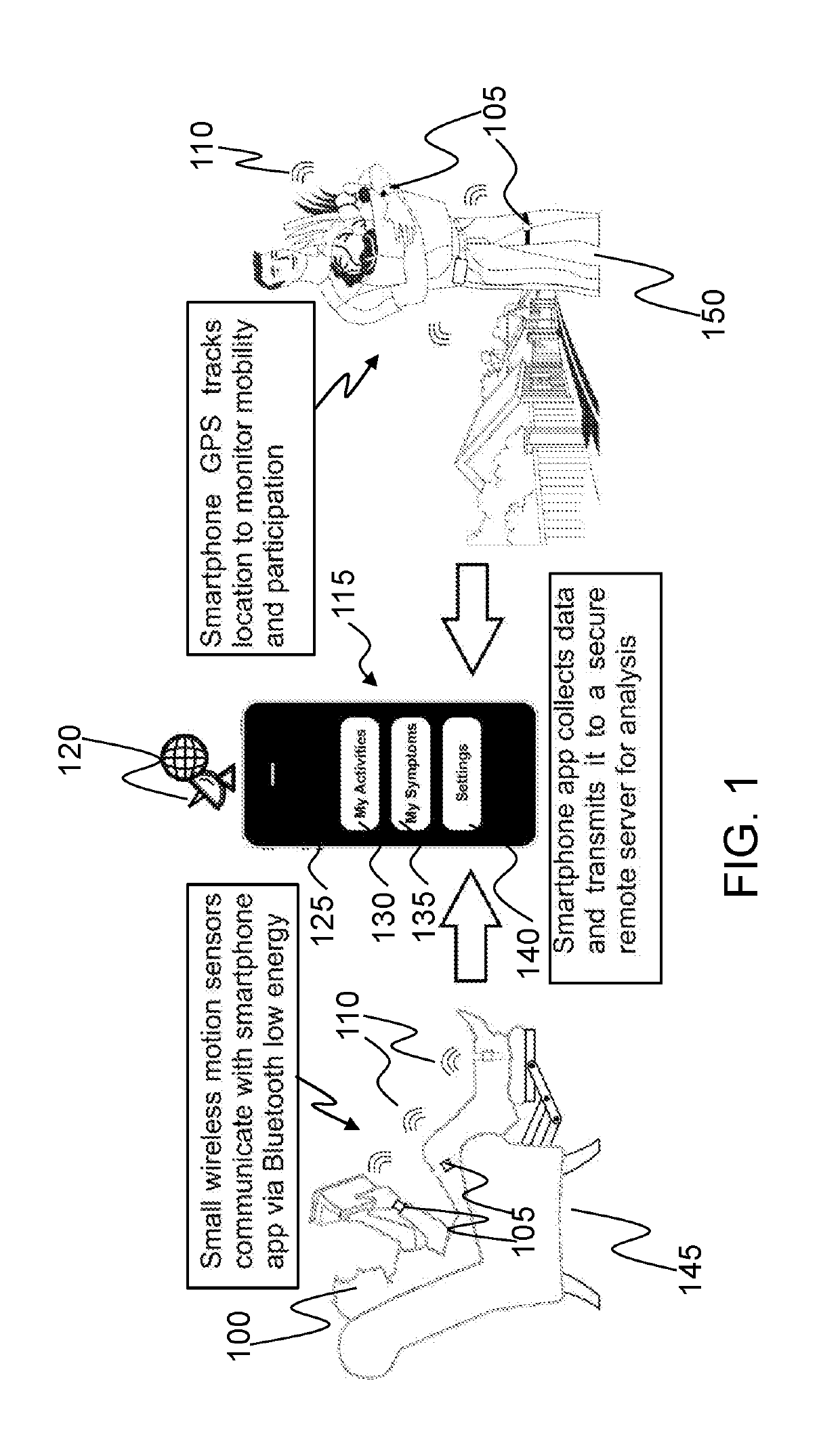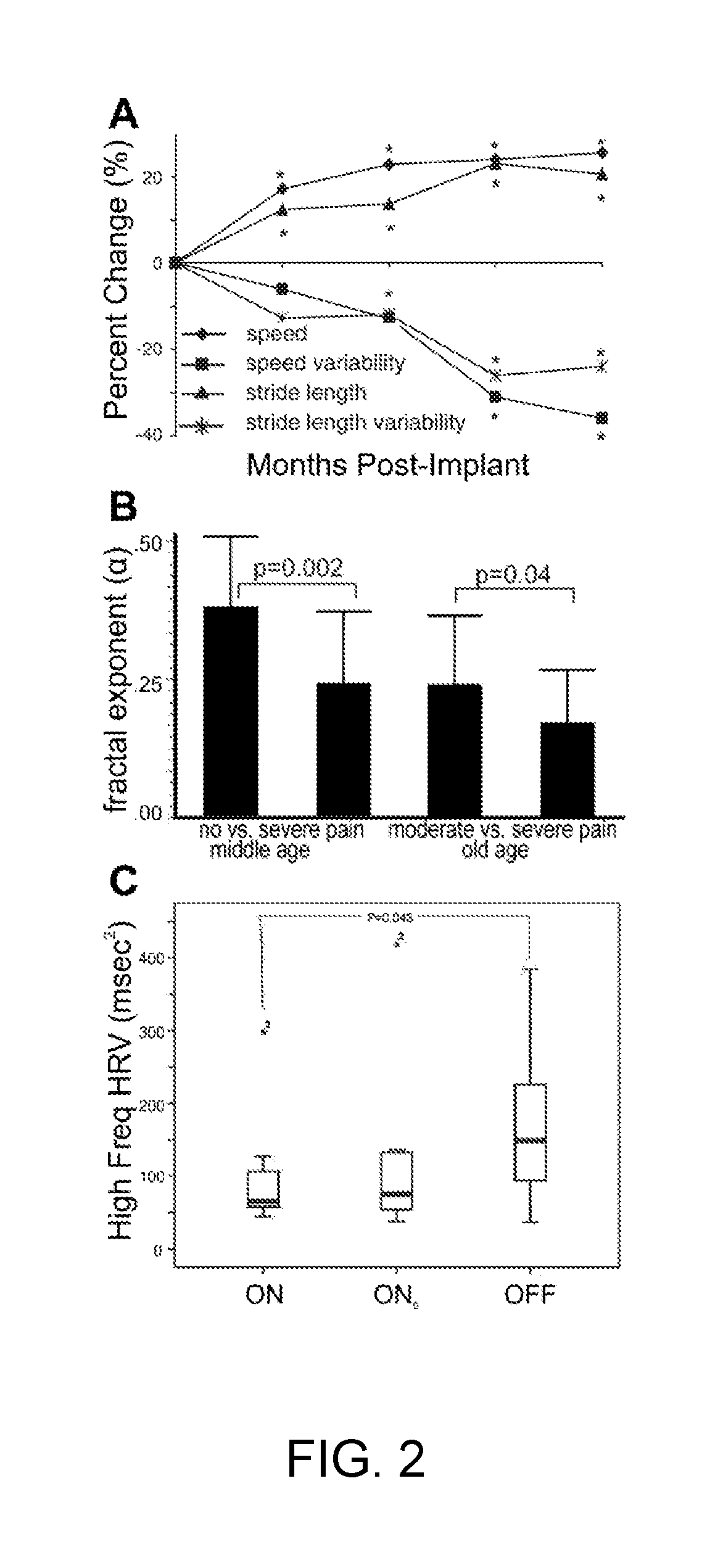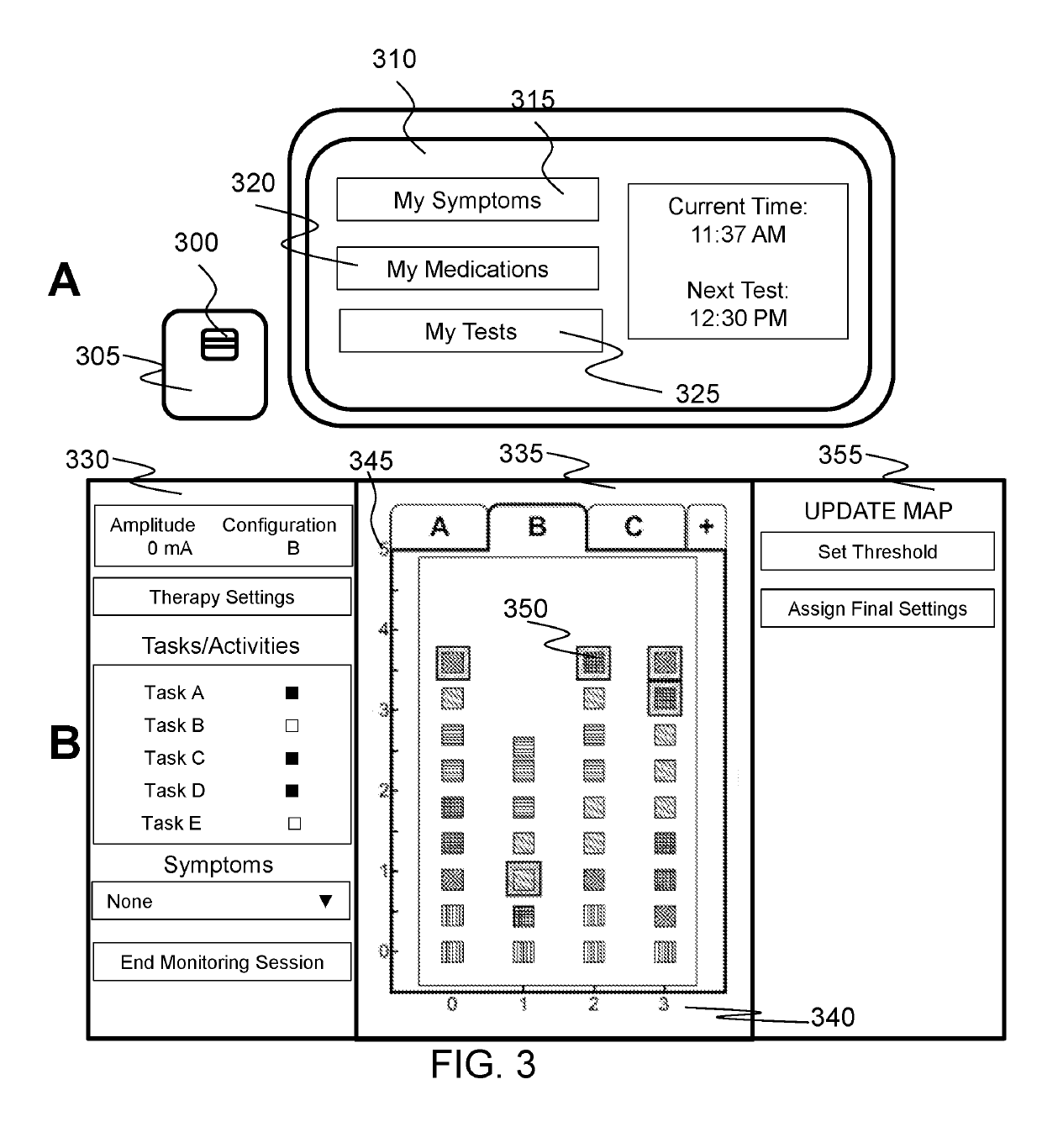Pain quantification and management system and device, and method of using
a technology of pain quantification and management system and device, applied in the field of systems, devices and methods for acquiring, measuring, monitoring, processing and analyzing physiological signals, can solve problems such as common sleep disturbance, and achieve the effect of reducing appeal
- Summary
- Abstract
- Description
- Claims
- Application Information
AI Technical Summary
Benefits of technology
Problems solved by technology
Method used
Image
Examples
Embodiment Construction
[0053]The present invention relates to systems, devices and methods for acquiring, measuring, monitoring, processing and analyzing physiological signals. More particularly, the present invention relates to using physiological signals to determine a subject's response to various conditions, variables or constraints. Still more particularly, the present invention relates to monitoring the subject's external body motion and environmental factors and determining the amount of pain a subject is suffering as a result of the motion and factors. Still more particularly, the present invention relates to a system, device and methods of quantifying a subject's pain to provide an objective measurement of the subject's pain. The present invention further relates to establishing and improving pain management protocols and therapy or treatment for the subject's pain based on the quantified pain measurement. The present invention seeks to overcome the problems and shortcomings of the current method...
PUM
 Login to View More
Login to View More Abstract
Description
Claims
Application Information
 Login to View More
Login to View More - R&D
- Intellectual Property
- Life Sciences
- Materials
- Tech Scout
- Unparalleled Data Quality
- Higher Quality Content
- 60% Fewer Hallucinations
Browse by: Latest US Patents, China's latest patents, Technical Efficacy Thesaurus, Application Domain, Technology Topic, Popular Technical Reports.
© 2025 PatSnap. All rights reserved.Legal|Privacy policy|Modern Slavery Act Transparency Statement|Sitemap|About US| Contact US: help@patsnap.com



